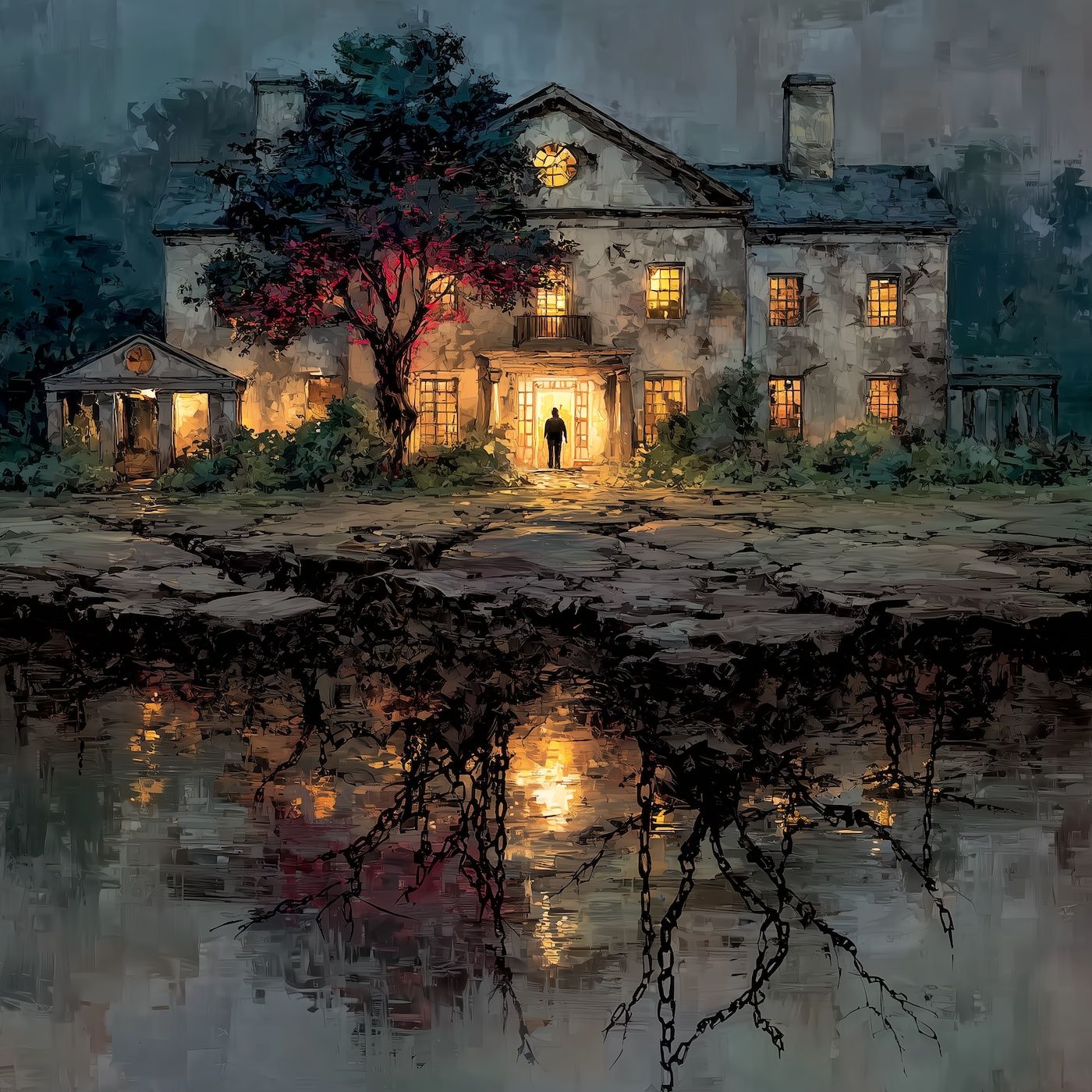DH Ep:30 Jefferson and Monticello's Darker Side
- Author
- Disturbing History-True Stories
- Published
- Tue 26 Aug 2025
- Episode Link
- https://www.spreaker.com/episode/dh-ep-30-jefferson-and-monticello-s-darker-side--67517848
On a humid Virginia morning in 1796, Thomas Jefferson recorded the death of Jupiter, his enslaved personal attendant of thirty-six years, with exactly seven words in the same ledger where he tracked the weight of newborn lambs. This chilling juxtaposition captures the essence of a story that has been deliberately hidden from American classrooms for generations—the transformation of Monticello into a laboratory where Enlightenment rationalism was weaponized to perfect human bondage.
While textbooks celebrate Jefferson as the author of the Declaration of Independence and founder of the University of Virginia, they omit how he tracked the menstrual cycles of enslaved girls as young as fourteen, calculating when they would become "breeding women" who would increase his capital by four percent annually through what he coldly termed "the silent profit." They don't mention the nail factory where enslaved boys as young as ten worked in temperatures exceeding 2,000 degrees, their daily productivity monitored with actuarial precision, their punishments calculated against the exact number of nails they failed to produce.
This narrative reveals how Jefferson conducted crude medical experiments on enslaved people, testing European remedies on Black children before administering them to his white grandchildren, measuring pain tolerance to justify providing minimal medical care, and documenting skull sizes to support his pseudo-scientific theories of racial hierarchy. Through his infamous Farm Book, we discover a surveillance state that anticipated modern totalitarianism, where 607 human beings over Jefferson's lifetime were reduced to data points, their families mortgaged to European banks, their children valued like livestock futures.
At the heart of this dark history lies the story of Sally Hemings, who at fourteen negotiated with the forty-four-year-old Jefferson for her children's freedom while legally free herself in Paris, entering a relationship that would span four decades and produce children who looked so much like Jefferson that visitors commented on the resemblance—a relationship denied by historians until DNA evidence in 1998 made denial impossible.
The narrative traces the resistance of those who refused to be reduced to property, from James Hubbard who repeatedly escaped despite calculated punishments, to the Hemings family who leveraged their skills to negotiate for better conditions, to the African spiritual practices hidden under cabin floors that archaeologists are only now uncovering.
When Jefferson died on July 4, 1826, in a coincidence mythologized as divine providence, 130 enslaved people faced catastrophe as families were torn apart on Monticello's west lawn to pay his massive debts, their screams and prayers never recorded in any official history.
Today, as descendants reclaim their narratives and archaeologists uncover what Jefferson tried to hide, Monticello stands not as a shrine to genius but as proof that no amount of brilliance can justify denying others their humanity, and that the same hand that wrote "all men are created equal" could calculate the market value of a child.
This is the Monticello that was hidden from generations of American students, the Jefferson whose full story was deemed too troubling for our national mythology, the history that reveals how America's apostle of freedom was simultaneously the architect of one of history's most documented systems of human oppression.
